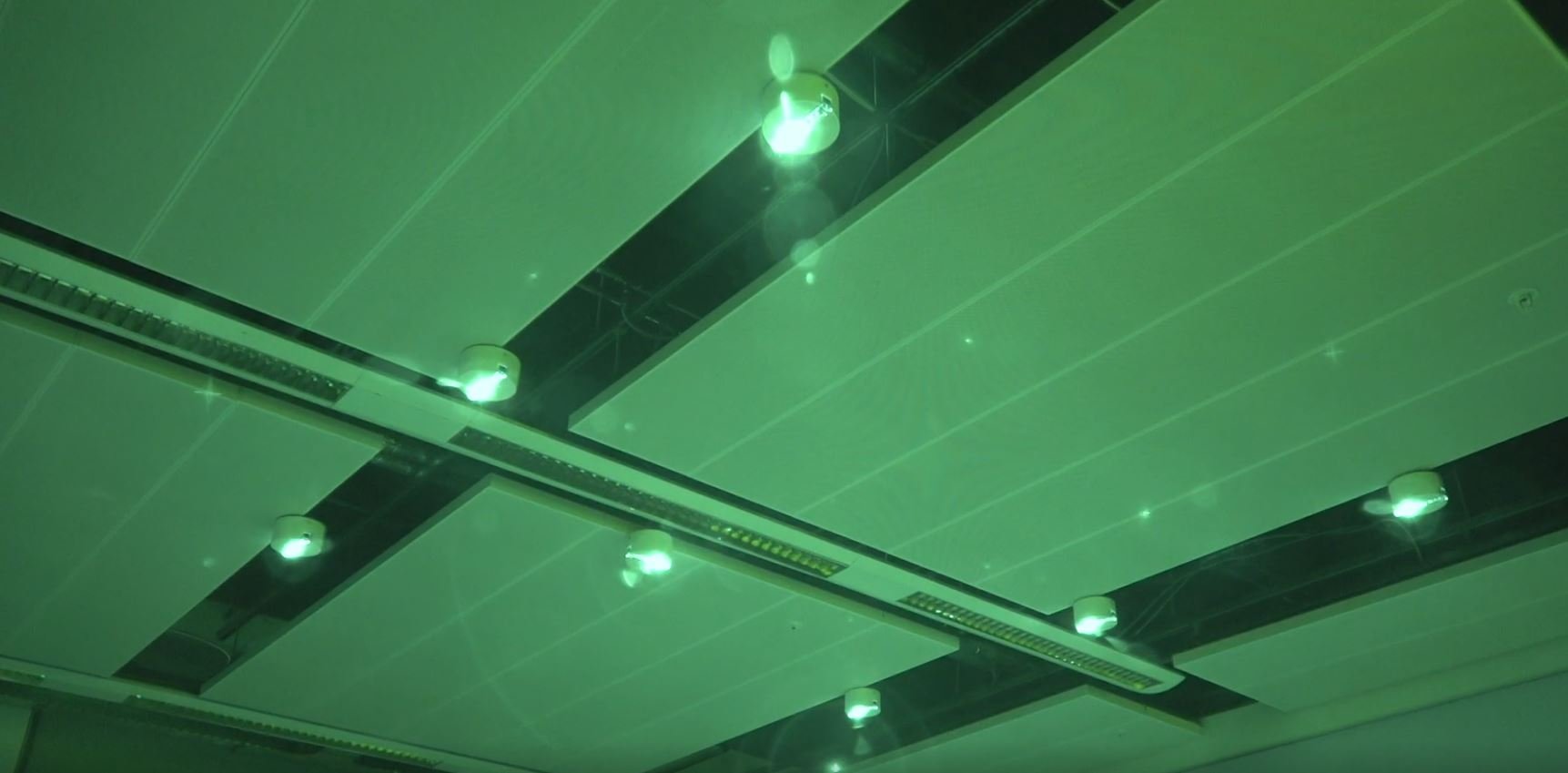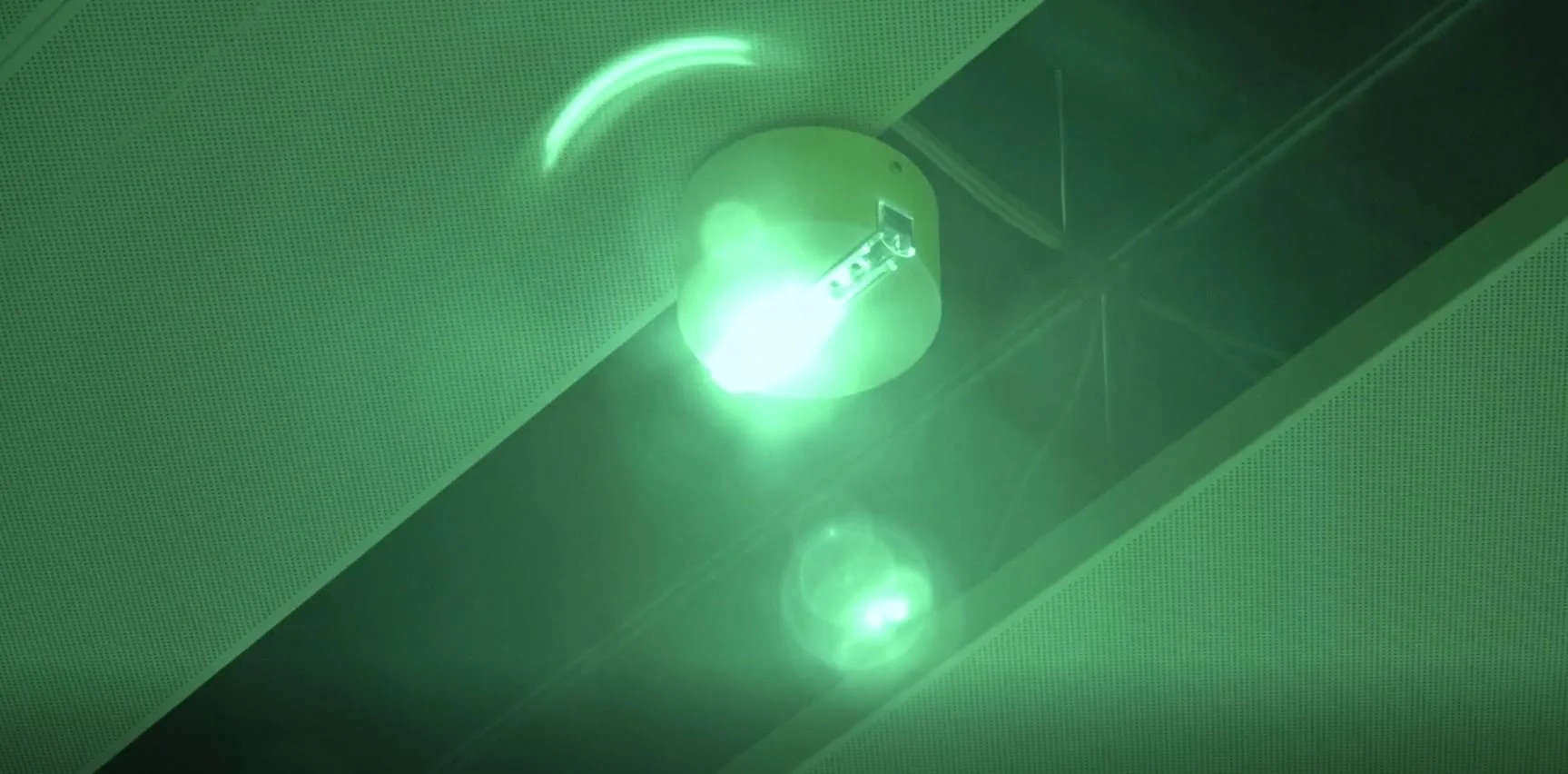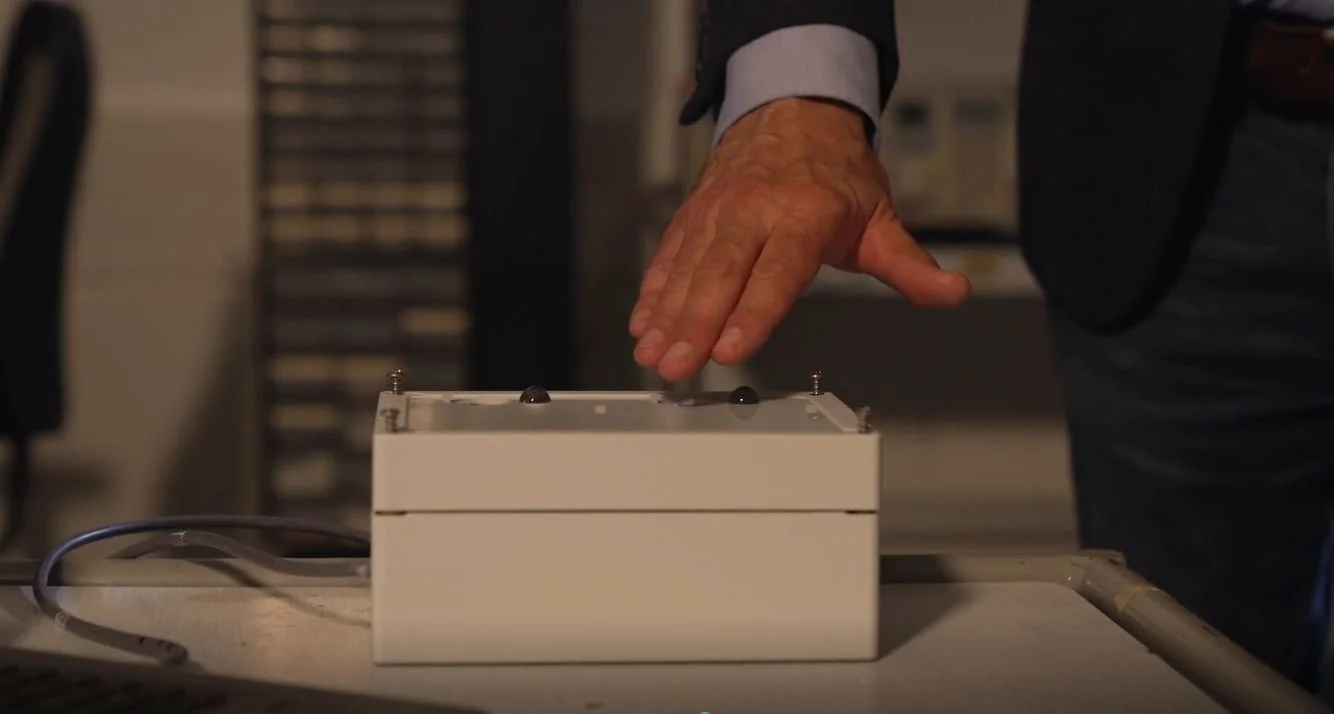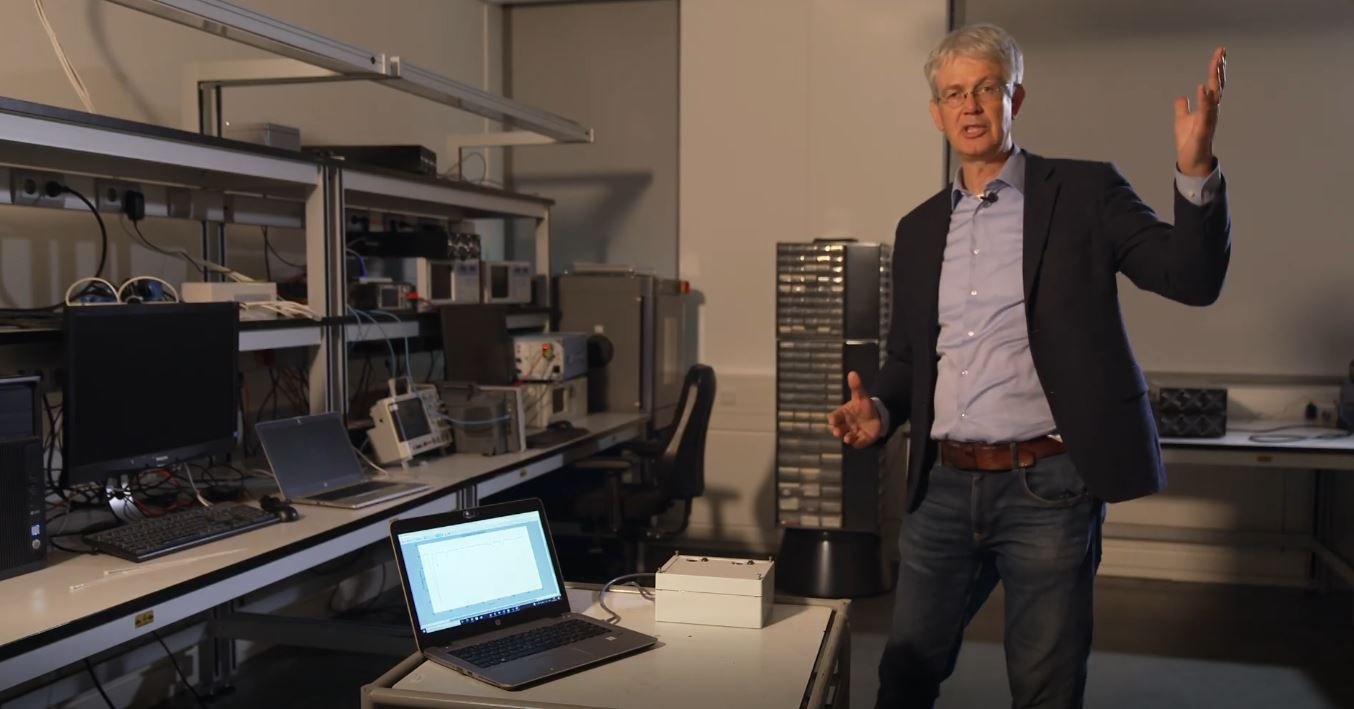LiFi MIMO Demonstration by ELIoT
Credit to ELIoT
Hi everyone and a happy new month.
Today, ELIoT released a demonstration video of optical wireless communication with LiFi in different environments. The video showed the application of LiFi in an office scenario and the implementation of a Multiple Input Multiple Output (MIMO) approach to avoid a signal loss if the line of sight is interrupted.
In simple terms, MIMO can be defined as a smart antenna technology for wireless communication in which multiple transmitting and receiving antennas are used at the source and the destination to send and receive more data. The use of multiple antennas can increase performance, data speeds, and transmission data capacity
In the video, Jean-Paul Linnartz, a Technical Leader ELIoT Signify Researcher and a Professor at the Eindhoven University of Technology demonstrated the LiFi MIMO approach.
Credit to ELIoT
Credit to ELIoT
As stated on his LinkedIn profile, Professor Jean-Paul Linnartz focuses on LiFi research, sensor networks and personalised Human Centric Lighting. He holds more than 70 granted patents. His many scientific papers about electronic watermarks, anonymous biometrics, radio communications (e.g. MC-CDMA) and Optical Wireless Communication (LiFi) have been cited more than 12,000 times. His research results have also been commercialised in ventures, such as Intrinsic-ID, GenKey, and Civolution. He was a faculty member at the University of California at Berkeley and at the Delft University of Technology. As a Senior Director at Philips Research, he has headed research groups on information security, wireless connectivity and on IC design.
You can watch the video below about LiFi MIMO:
The ELIoT project demonstrates optical wireless communication with light (Light Fidelity - LiFi) in different environments. This videos shows the application of LiFi in an office scenario. Key feature is the implementation of a Multiple Input Multiple Output (MIMO) approach to avoid a signal loss, if the line of sight is interrupted.
Here is a transcript of the video demonstration with a few editing:
“The internet is not always as fast as we'd like it to be, particularly if we communicate wireless via WiFi. And the problem is quite often that there is congestion that are too many people trying to access the internet at the same time and all the signals interfere with each other. But if we now communicate via light, we may solve that problem.”
“Light does not go through the wall. So here in my environment, I don't get interference from people using the spectrum. Next Door, light travels via a line of sight. But that also has a disadvantage. And quite often I hear the concern, what if I block that line of sight, then isn't communication gone as well? Well, the same principle may work as what I see when I hold my hand on top of a sheet of paper in a well-illuminated office space where I don't see a very sharp, harsh shadow. When I hold my hand above a sheet of paper, the light comes in from multiple angles. And that's exactly what we do with our communication system, we build an infrared light communication system.”
“But we have multiple points in the ceiling from where we reach the client’s device. And the example of this room, we communicate to this client device from six points in the ceiling, from six light points, six emitters that all contribute and cooperate to provide connectivity to the client device. But how do we make sure that these light points in the ceiling cooperate in a proper way to optimise the performance of the connection to the client’s device? So, this is what we call distributed MIMO distributed because, at multiple different positions in the ceiling, we have a light source and emitter, those are the multiple inputs to the communication system. And they communicate over the channel to multiple outputs of the channel multiple detectors. And in that way, we see a lot of line of sight.”
“And if I block one line of sight, there is still a connection going on from the other point in the ceiling. In the ideal situation, these detectors see the light points in the ceiling, the communication is at its best. If I block one of the detectors, I block one of the lines of sight. So, in one of the links from an emitter, we see that the throughput goes down, but there is still a reliable link. Also, a reliable link continues to be there if I block the other line of sight. So in that way, we can make sure that there's always at least one of the emitters in the ceiling that is seen by at least one of these detectors, but we can go even further because, in fact, this detector sees a mixture of multiple light sources in the ceiling.”
“The other detector will also see a mixture of light sources, but that is a different mixture. And because of these differences in the mixture, the mathematical operations can separate these such that we have clean lines of sight that can be separated the first line of sight can carry the first part of the data, and the line of sight can carry other parts of the data and thereby we increase the throughput of these optical wireless communication systems by distributed MIMO.”
“So, we have busted the myth that LiFi stops working if someone accidentally blocks a line of sight. And we have shown that we have an existing set of ICS integrated circuits that have been optimised for another application for communication over wires, and over power lines and we are misusing that so to say for LiFi. But we have shown that it is possible and of course, in the earlier project, we have also improved the algorithms such a system can adapt much faster and can optimise really the performance for optical wireless communication. And with that, the project makes the next step into making LiFi a reality.”
ELIoT
As stated on their website, ELIoT is an EU Horizon 2020 project. It is led by the Fraunhofer Heinrich Hertz Institute. The central aim of the project is the development of mass-market Internet of Things (IoT) solutions using LiFi, a next-generation wireless communication network, that travels over light instead of radio waves. With LiFi, the ELIoT consortium will explore a networked wireless communication technology operating in the previously unused light spectrum, besides WiFi and cellular radio.
ELIoT has started in 2019 as a project funded by the EU’s biggest Research and Innovation programme, Horizon 2020. This programme promises more breakthroughs by taking great ideas from lab to the market. ELIoT receives €6 million funding from the Public-Private Partnership ‘Photonics21’ and is formed by the partners Signify (formerly Philips Lighting), Nokia, MaxLinear, Deutsche Telekom, KPN, Weidmüller, LightBee, the University of Oxford, Eindhoven Technical University and the two Fraunhofer Institutes; Heinrich Hertz Institute and FOKUS. Even more, companies will shortly be added to the consortium as associated partners.
Li-Fi Conference 2022
The Li-Fi Conference 2022 Edition was a great success. Li Fi Tech News will very soon write articles on the topics treated at the Conference.
What is LiFi?
LiFi, also known as "Light Fidelity" is a wireless optical networking technology, which uses light-emitting diodes (LEDs) to transmit data. In 2011, professor Harald Haas made a LiFi demonstration at the TED (Technology, Entertainment, Design) Global Talk on Visible Light Communication (VLC).
VLC uses light as a medium to deliver high-speed communication like Wi-Fi and complies with the IEEE standard IEEE 802.15.7. The IEEE 802.15.7 is a high-speed, bidirectional, and fully networked wireless communication technology-based standard similar to Wi-Fi's IEEE 802.11.
How does LiFi work?
LiFi is a high speed, bidirectional, and fully networked wireless communication of data using light. LiFi constitutes of several light bulbs that form a wireless network.
When an electrical current goes through to a LED light bulb, a stream of light (photons) emits from the lamp. LED bulbs are semiconductor devices, which means that the brightness of the light flowing through them can change at extremely high speeds. The signal is sent by modulating the light at different rates. The signal can then be received by a detector that interprets the changes in light intensity (the signal) as data. Also when the LED is ON, you transmit a digital 1, and when it is OFF, you transmit a 0.
LiFi Benefits
The primary benefits of LiFi are as follows:
• Security: Provides entirely secure access. Where there is no light there is no data.
• Safety: Does not produce electromagnetic radiation and does not interfere with existing electronic systems.
• Localisation: Allows localisation due to the small coverage area of LiFi access point - localisation can be used for very precise asset tracking.
• Data density: Provides ubiquitous high-speed wireless access that offers substantially greater data density (data rate per unit area) than RF through high bandwidth reuse.
Credit to Oledcomm
LiFi Applications
LiFi can be used for so many applications and the list is increasing every year. You can read our updated list of Li-Fi applications at the following link:
Credit to pureLiFi
LiFi Systems Reviews by LiFi Tech News
OLEDCOMM LIFIMAX KIT REVIEW - ONE YEAR IN
We reviewed the LiFiMax kit produced by the leading French LiFi company Oledcomm. We bought this LiFi kit system at the end of 2020. After over a year of use, we decided to write a review of this LiFi system. We looked briefly at the profile of Oledcomm, a brief history of the LiFiMax system, the Kit box contents, some testing and performance results of this LiFi system, the customer experience and our own verdict (the good and the bad points) of the LiFiMax kit.
You can read the review on this link:
https://www.lifitn.com/blog/lifimaxreview
SIGNIFY TRULIFI 6002.1 STARTER KIT SYSTEM REVIEW
We also reviewed the Trulifi 6002.1 starter kit produced by Signify, the world leader in lighting for professionals, consumers and lighting for the Internet of Things. We got this LiFi kit system with the help of PCDSI and Signify around August 2021. In a similar fashion done with our previous review of the LiFiMax kit a few months ago, we will look briefly at the profile of Signify, a brief history of the Trulifi 6002.1 kit, the Kit box contents, some testing and performance results of this LiFi system, the customer experience and our own verdict (the good points and the bad points) of the Trulifi 6002.1 kit.
You can read the review on this link:
https://www.lifitn.com/blog/trulifi6002review
In conclusion, if you are also interested to hear more information about the OWNII Coin or enquire about LiFi devices such as the LiFiMax and Trulifi, you can contact us through our chatbot or by sending an email through our contact us form. If you enjoyed this post and would like to hear more updates about LiFi technology, subscribe to our newsletter. Don’t forget to subscribe to our social media accounts. You can also join our Telegram group about LiFi technology on this link:
https://t.me/joinchat/FMzOmsEKyJFrU6Af









